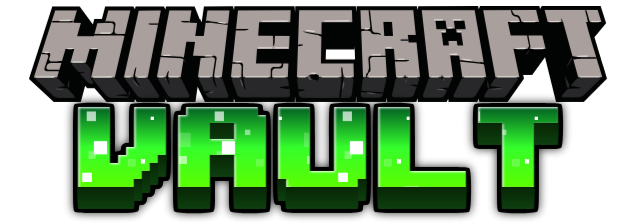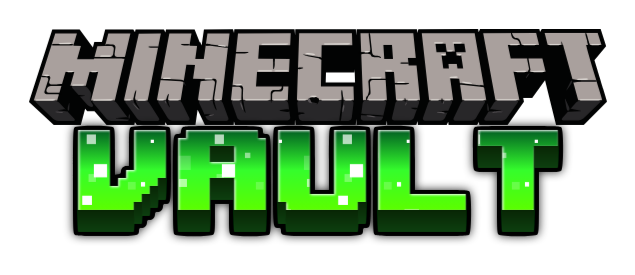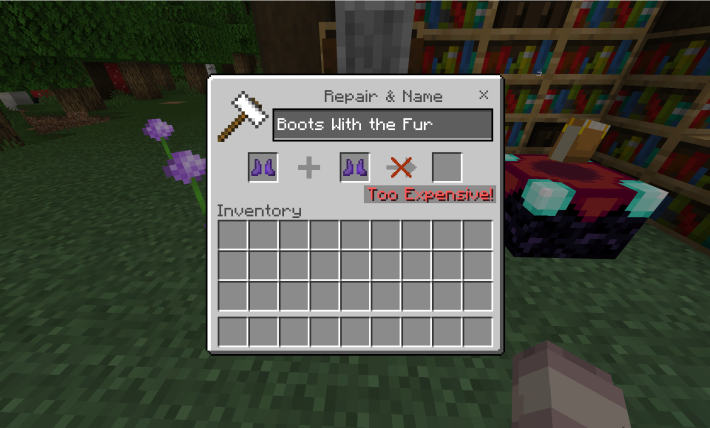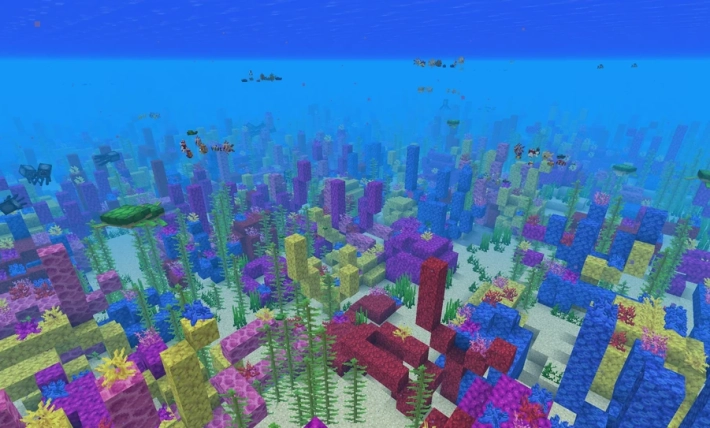Table of Contents
What is a beacon in Minecraft?
A beacon is a craftable block in Minecraft that can be powered to give beneficial effects to nearby players. When it is powered, it will release a light beam into the sky in a straight line. You can power the beacon by crafting a pyramid of specific blocks. You can use iron blocks, gold blocks, diamond blocks, emerald blocks, and netherite blocks to power a beacon, making it a rather expensive task to power. The beacon would then sit at the top of this pyramid and display the light once it is properly powered and a buff is selected.
In order to activate a beacon, it also needs a clear view of the sky. This rule ignores glass (which will be mentioned in more detail below) and bedrock, which allows beacons to be used in the nether as it ignores the nether roof. It also ignores water and lava, which are useful for various types of builds.
Additionally, beacons also function as a light source and give off a light level of 15. This means that they can melt snow and ice, which is useful to know as beacons can also make great decoration pieces. Notably, beacons can also not be pushed by using pistons.
Breaking a beacon
Beacons can be broken by any tool, including the player’s hand. They also have a default mining time of 4.5 seconds, which cannot be changed even by using better tools. If a beacon is broken by any type of explosive, it will also simply drop as the item itself.
How do I craft a beacon?
Beacons require two major parts: the item itself and the materials for the pyramid.
Materials
Crafting a beacon is quite simple but requires relatively expensive materials.
Glass
The first and easiest material you’ll need is glass blocks. You’ll need five glass blocks for the recipe for crafting a beacon. You can simply get glass blocks by putting sand in the furnace and cooking it, which will produce glass. You can also use a tool with the silk touch enchantment to collect glass blocks without them being destroyed.
Obsidian
The next material you’ll need is obsidian. You’ll need 3 obsidians for the recipe, which is pretty simple but does require some time. There are a few ways to obtain obsidian, with the easiest method being simply mining it. You can produce obsidian by pouring water on a source lava block.
You also find naturally spawned villages in ruined portals both in the overworld and the nether. Also in the nether you can find obsidian in chests inside bastion remnants and nether fortresses at a small chance.
Nether Star
The last material you’ll need is a nether star, which cannot be crafted but rather drops from one of the bosses in the game, the wither. You can fight the wither by gathering three wither skeleton skulls by killing wither skeletons and four blocks of soul sand (which can be found in the nether wastes biomes or inside soul sand valleys). You can then summon the wither by placing the soul sand in a “T” formation and placing the heads in a row on top of the sand.
Fighting the wither is annoying, but easily doable with preparation. By making a container underwater or inside a box of obsidian, you can prevent the wither from destroying its surroundings. This is important because not only the wither can fly free if not in a container, but it also does a lot of destruction to the world. Outside of that, you simply need to kill the boss, and it will drop the nether star for you.
Crafting Recipe
The recipe for crafting the beacon is quite simple and requires a crafting table. Inside the crafting table, you place three obsidians on the bottom row, your Nether star in the center, and fill out the remaining slots with glass. By doing this, you should have your beacon now crafted, which is quite simple!
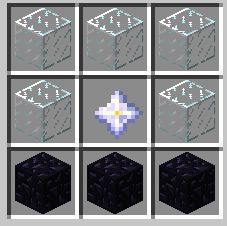
Crafting blocks for the pyramid
The pyramid will require a different number of blocks depending on its size, but that will be explained in further detail below.
All it takes to craft each block is nine pieces of material; in this case, it would be:
- 9 iron ingots per block
- 9 gold ingots per block
- 9 emeralds per block
- 9 diamonds per block
- 9 netherite ingots per block
and simply filling a crafting table with the materials will create each block you need. It’s important to remember that you don’t have to make the beacon out of only one of these materials; you can use any combination and it will work. Though usually for decorative purposes (or ease since iron is the easiest block to obtain here without a farm), people typically stick to a single block type, which is understandable.
How do I use a beacon?
Beacons typically have two main uses: decoration and providing useful boosts to the player.
How to activate beacon buffs
Like previously mentioned, you must build a pyramid using materials for the beacon to activate. It requires a different amount of resources, but the actual resources used on the beacon don’t affect the boost you’ll receive. This means that an iron pyramid is just as effective as a netherite pyramid, despite the fact that netherite is a much more expensive material to obtain.
You’ll need to complete blocks of each type, which requires getting iron ingots, gold ingots, diamonds, emeralds, and netherite ingots, depending on the type of pyramid you’ll be building.
Beacons can have up to four layers. Each of these you’ll need to get access to more status effects from the item. Here’s a rough explanation of what each layer does, how many materials you need, and what benefits they provide for a single beacon pyramid.
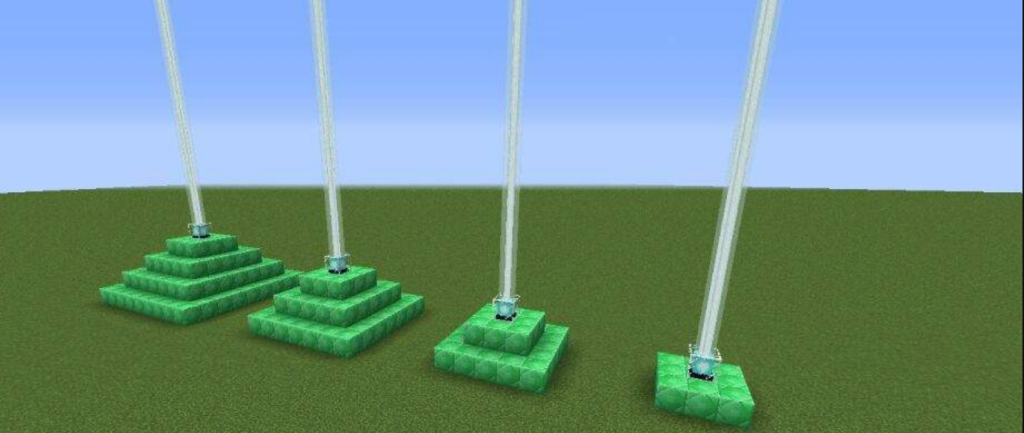
Single-layer beacon
- 3×3, using 9 blocks. Which takes 81 materials.
- Allows the player to select speed (which increases the player’s movement speed) or haste (which increases the player’s mining speed and attack speed) status effects.
- Effects have a 20-block range.
- Effects persist for 11 seconds after the player leaves the beacon’s range.
Two-layer beacon
- 3×3, then underneath a 5×5 layer, using 34 blocks. Which takes 306 materials.
- Allows players to select the resistance (which decreases the incoming damage the player takes) or jump boost effects (which increase the jump distance of the player) or previous ones.
- Effects have a 30-block range.
- Effects persist for 13 seconds after the player leaves the beacon’s range.
Three-Layer Beacon
- 3×3, 5×5, then a 7×7 layer, using 83 blocks. Which takes 747 materials.
- Allows the player to select the strength effect or previously mentioned effects.
- Effects have a 40-block range.
- Effects persist 15 seconds after the player leaves the beacon’s range.
Four-Layer Beacon
- 3×3, 5×5, 7×7, then a 9×9 layer, using 164 blocks. Which takes 1476 materials.
- Allows the player to select a secondary power, which is regeneration, along with their primary power.
- The player could forfeit the secondary power and boost their primary power to level 2.
- Effects have a 50-block range.
- Effects persist for 17 seconds after the player leaves the beacon’s range.
Note: In the Java edition of Minecraft, players can select multiple primary effects instead of just regeneration. This does mean you’ll be forfeiting regeneration if you choose to go with any other combination of primary effects, however. You can still choose to forfeit the second effect and simply raise the main effect to level II.
If you are looking for all the beacon effects at once without having to make six full beacons, that is definitely possible. Using the method below, you can make a max beacon that gives you all the effects, but this will require six beacons for you to do.
6 beacons with 4 layers
- 4×5, 6×7, 8×9, then a 10×11 layer, using 244 blocks. Which takes 2196 materials (much cheaper than making six full separate beacons).
- Gives the player access to all effects from all tiers at their highest levels.
- Has the same 50-block range
- Has the same effects that persist over 17 seconds after the player leaves the beacon’s range.
Once you’ve built the beacon’s pyramid, you just need to go into the beacon’s GUI and select which buff you want. Then you need to offer a tribute to the beacon to activate it, which can be used with any of the materials you can use to build the pyramid. I highly recommend using iron, since it’s cheap and easy.

How to use beacons as decorations
Beacons are actually quite useful for decorating, as the light they emit is not only beautiful but can be changed. It’s also very cheap to use them for decorations since you only need a 3×3 pyramid if you’re looking to hide everything but the beam of light. There are a few things to note when using beacons as decorations.
Changing beam colors
An amazing thing about the beams is that you can actually change the color of the beams. You can do this by using stained glass, which can change the color of the beam when it passes through the glass. You can also use hardend stain glass and hardend stain glass panes. In Minecraft Bedrock Edition, stain glass panes have the same effect as stain glass, but this does not happen in Java.
You can make stained glass by putting dye in the middle of a crafting table and then surrounding it with glass.
When you set the first glass on top of the beacon, it will itself become the main color. Any other colors will try to average themselves using red, blue, and green along with the initial color. This means there’s potentially millions of combinations you can do to get your desired color. This is due to the fact that you can keep stacking different blocks to tune the color to your liking. Each block you place will keep tuning the color, meaning you have plenty of combinations you can try for the desired color you’re looking for.
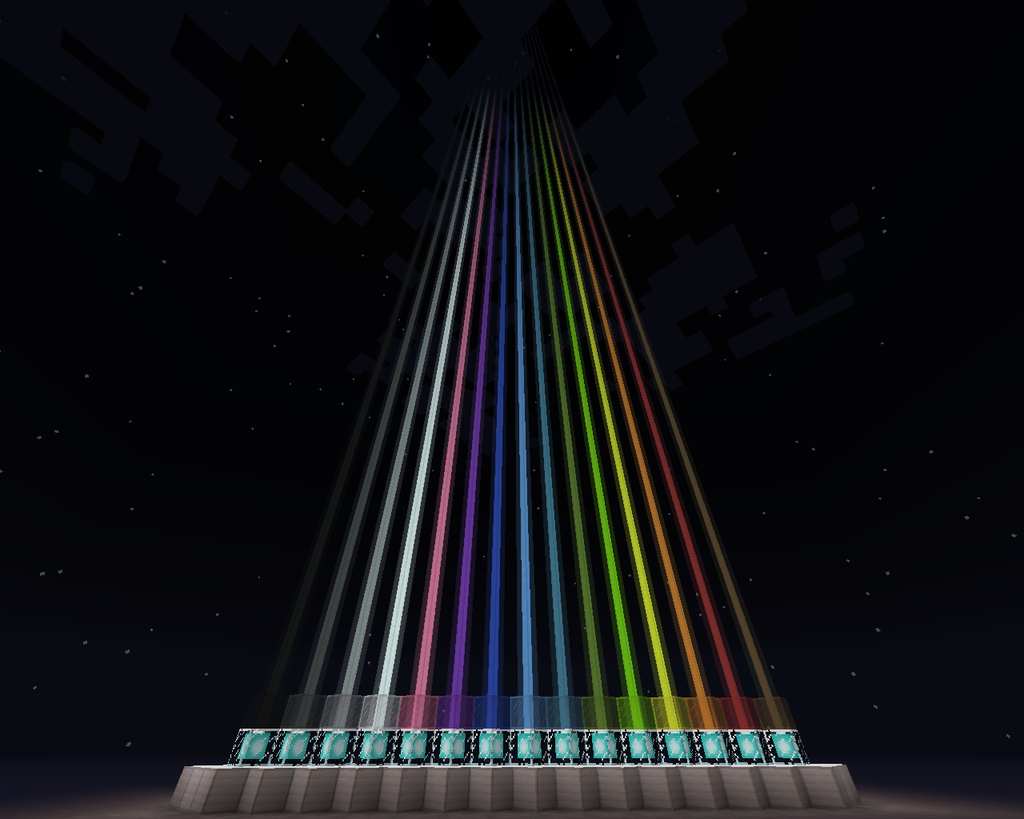
Special interactions in Bedrock Edition
Beacons have two unique interactions in Bedrock Edition.
The first one is that beacons can be waterlogged in Bedrock Edition. This means that if you place a water bucket on a beacon, it can contain the water. Note: This does not stop the beacon from working.
Beacons can also emit redstone signals, which is good to know if you want a light source that can emit redstone signals for some builds. This is especially useful for large builds that have underground spaces where mobs could potentially spawn if there are no torches.
